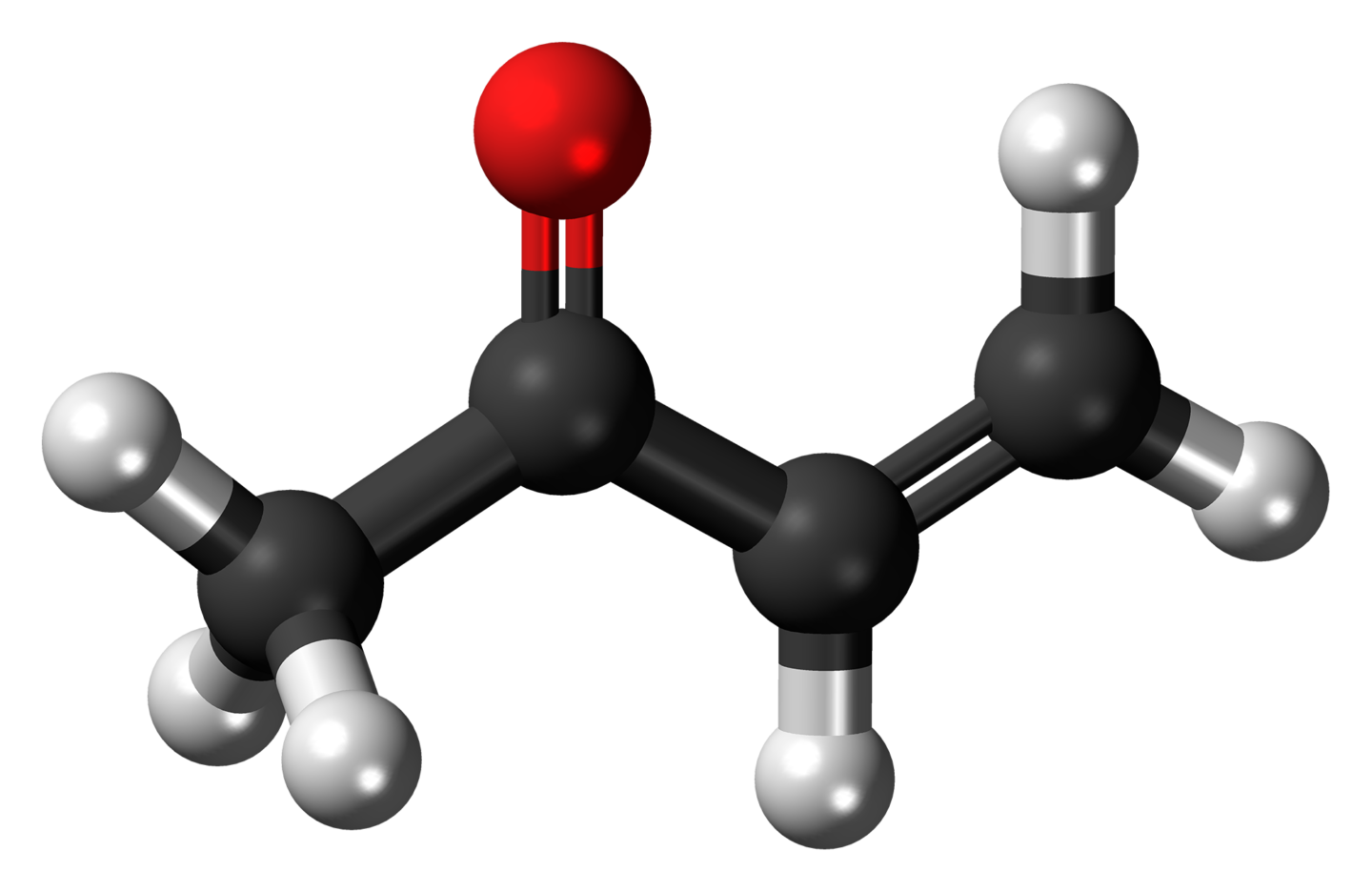Many athletes routinely seek new ways to improve their performance. They might turn to ergogenic aids—both legal and, unfortunately, illegal. Or they may invest in nutritional supplements or other practices in pursuit of that competitive edge.
But most things for which there are performance-enhancing claims follow a similar arc: they burst onto the scene; proponents and the brands who make them promise the world; but, ultimately, they fall short of the hype.
Exogenous ketones, specifically ketone esters, are one of the latest ergogenic aids generating attention among endurance athletes. Ketone esters have been crowned as one of the next “super fuels.” But can they live up to this sensational billing? And are there certain situations when ketone esters might improve endurance sports performance?
It’s important to note that I have never been a fan of ergogenic aids, either as an international pro cyclist, a U.S. national team rider, or, now, as a coach. I remember one particular season during my race career when I had a sports director who pushed ergogenic aids. That year, I spent a lot of time and money at the supplement store, trying to buy performance. I had one of my worst seasons ever.
Generally, brands make fantastic claims about ergogenic aids; those claims are rarely backed by significant, well-conducted research or proven in the field. It must also be emphasized that this industry is not regulated; brands can make these claims to help promote their products without hard scientific evidence.
Ergogenic aids are an easy sell to the susceptible athlete who is always seeking ways to improve performance. In reality, they create a false sense of belief that a pill or powder will do the work.
And chasing performance in a pill can be distracting—not to mention expensive—and take focus away from what really leads to performance gains: consistent, purposeful hard work, coupled with rest and recovery, and healthy nutrition, hydration, and sleep habits.
All that being said, I have found myself more susceptible to the hype around exogenous ketones. I wondered if this ergogenic aid could break the pattern of those that came before it and live up to its promises. So, I studied the research.
Here’s what I found.
What are ketone bodies?
Ketone bodies are lipid-derived molecules that can, under certain circumstances, be used as an additional fuel source. During times of metabolic stress, such as starvation, limited carbohydrate availability, or exhaustive exercise, free fatty acids are more readily released from adipose tissues, enter the liver, and are converted to ketones.
These compounds can replace glucose as a fuel source for the brain, heart, and skeletal muscles. Ketogenic diets characterized by high fat and restricted carbohydrates can induce ketosis, a state in which high levels of endogenous ketone bodies circulate in the blood. There are two ketones used by the body: acetoacetate (AcAc) and B-hydroxybutyrate (BHB).
Potential performance benefits
The limited research on ketones, which we’ll detail in a moment, suggests that ketones could be beneficial to humans. Studies have shown that ketones reduce muscle-protein breakdown and glycogen depletion, and also trigger satellite cell activation that results in muscle remodeling and regeneration. There is also a growing body of evidence that suggests ketones can help with several chronic conditions including Alzheimer’s and cancer. [1,2]
Furthermore, ketones have a positive influence on the autonomic nervous system, oxidative stress, and inflammation. Recent studies also suggest that ketone bodies can improve cognitive function and the recovery process by increasing glycogen synthesis. [3]
Furthermore, it has been hypothesized that ketones have a thermodynamic advantage, meaning that they are more efficient in their production of energy than other fuels, like carbohydrates. [1]
Ketogenic diets significantly reduce carbohydrate intake, forcing the body to metabolize free fatty acids and produce ketones. Such a restrictive diet, which limits the fuels used in sports that require high-intensity efforts (i.e., cycling), are detrimental to performance. [4]
That is why research has turned toward supplementation with exogenous ketones. Scientists speculate that the use of exogenous ketones might allow athletes to harness these molecules’ positive attributes while mitigating the negative effects of a ketogenic diet—less-than-optimal metabolic conditions caused by severely restricted carbohydrate intake or prolonged fasting—which is required to naturally produce ketones.
Ketones are complicated
Exogenous ketones come in two forms: ketone esters and ketone salts. As a supplement, esters are preferrable because they raise blood ketone levels three times more than salts, and with less gastrointestinal distress and water weight gain.
Given the potential positives that ketones might deliver, should you invest in adding them to your training regimen?
“Ketone metabolism is extremely complicated and exogenous ketones are expensive,” says Dr. Dana Lis, the high-performance sport dietician for the Israel Start-Up Nation WorldTour team, who recently joined Science in Sport as the U.S. Head of Performance.
Dr. Lis is in a unique position with one foot in cutting edge research and the other foot in practice as a nutritionist in professional sports. Often, results seen in a research setting—testing an isolated factor in a very controlled environment—are irreconcilable with real-life application. Dr. Lis has experimented with exogenous ketone supplementation with her WorldTour riders in various contexts.
There are numerous confounding factors influencing ketone body metabolism and its ability to be utilized as an alternative fuel source. These factors include: tissue type (brain versus skeletal), training status, circulating levels of ketone concentrations, and muscle fiber type (Type I versus Type II muscle fibers).
For example, ketone uptake is different, at rest, in the brain compared to skeletal muscle. In the brain, uptake appears to be linear—the more you have in circulation, the more your brain takes up. However, in skeletal muscle, there seems to necessitate a sweet spot of ketone concentration in order to elicit ketone absorption. Below this concentration and above this concentration, uptake diminishes. This uptake may also be influenced by whether the ketones are endogenous or exogenous.
With so few studies looking at the various factors influencing ketone metabolism, across a spectrum of exercise intensities over varying durations, there is currently no conclusive research to guide ketone supplementation as a fueling strategy.
Context is critical
The specific demands of a competitive event may determine the effectiveness of ketone supplementation. While in some cases ketones’ inhibitory effect on glycogen might be a positive, in other cases it might be a negative. Ketone’s ability to spare glycogen (i.e. inhibit glycolysis, which is the primary means of producing high-intensity energy) might allow some athletes, such as ultra-endurance runners who operate at a purely aerobic intensity, to thrive.
However, the suppression of the glycolytic pathway would likely be detrimental to the performance of cyclists, whose sport demands a variety of high-intensity efforts and, as such, quick, efficient access to high-intensity fuels.
In fact, cyclists need to be flexible in their ability to access the right fuel for the work, as these athletes hit the spectrum of intensity levels in one event. Competitive cyclists cannot be reliant on accessing only one fuel which satisfies the needs of only a sliver of the intensity range.
Ketone supplementation is potentially effective over a narrow range of intensities, a constant effort at approximately 50-70 percent of VO2max, during which athletes might squeak out minor performance gains.
“The only time we have used ketone ester supplementation alone is during the classic races when the first three hours are typically slow, and the riders do not have to perform at a high intensity,” Dr. Lis says. “In this case, we supplement with a dose of ketone esters before and/or during the first three hours of the race. We have not scientifically tested this implementation, but anecdotally the riders feel it delivers positive results and allows them to sustain their fuel sources. “
Are ketone esters a super fuel?
Ketone esters achieved “super fuel” status after a study led by Dr. Pete Cox entitled “Nutritional Ketosis Alters Fuel Preference and Thereby Endurance Performance in Athletes” was published in 2016. [5]
The research team concluded that the ingestion of ketone esters was associated with muscle-glycogen sparing during exercise and, as a result, improved endurance performance. The researchers also suggested that the advantage was primarily due to the fact that ketone body oxidation is thermodynamically advantageous to that of carbohydrate oxidation. In essence, ketones were shown to be more efficient in their energy production.
However, the study had shortcomings. First, the subjects were tested in a fasted state over a two-hour period under constant load at 70 percent of VO2max. This low carbohydrate state is not a realistic representation of the fuel state for an endurance event, and in a fasted state the body will naturally transition from carbohydrates to fats for its energy.
Furthermore, operating at 70 percent of VO2max is not representative of a mass start cycling competition—road, cyclocross, or cross-country mountain biking—where competitors are hitting a spectrum of intensity levels or operating entirely at above-threshold intensities.
More recent studies have also poked holes in the Cox study. It is important to remember that metabolic pathways work in combination with each other in varying ratios depending on the energy demand, and never work in isolation.
Dr. Petrick and his research team discovered that when pyruvate—a molecule derived from glucose metabolism—was readily available, the use of ketones for fuel decreased in muscles. [6] This suggests that when adequate carbohydrate stores are in place, ketones become irrelevant as a fuel source.
Furthermore, this team’s findings contradicted the conclusion of the Cox team that ketones provided a thermodynamic advantage. In fact, the data suggested that the thermodynamic efficiency between the two fuel sources (ketones and carbohydrates) was identical.
Finally, the authors also stated that pyruvate generated three times greater amounts of ATP than ketones.
Numerous other studies, including those by Dr. Poffé, dispute the conclusions made by Cox and his team in 2016. [7,8]
Following is a summary of this recent research:
- There is no thermodynamic advantage of ketones.
- Exogenous ketones do not positively impact endurance performance when evidence-based recommendations for carbohydrate consumption are followed.
- Ketone ester supplementation alone decreases blood pH, ultimately mitigating potential ergogenic gains to improve endurance performance and likely producing a detrimental effect on performance.
Can ketones boost recovery?
In 2019, Poffé and his team tested the potential for ketone esters to improve recovery and mitigate the development of non-functional overreaching symptoms during blocks of heavy training loads.
In the study, elite athletes were tested over a three-week period of heavy training. Both study and control groups received standardized carbohydrate-rich dinners and breakfasts, as well as an optimal recovery carbohydrate plus protein mix within 30 minutes of completing their workouts. The ketone esters group was also provided 25 grams of esters post-workout to increase their plasma ketone concentrations.
The findings produced some positive results regarding supplementation. For background, autonomic neural imbalance plays a critical role in the development of non-functional overreach. This is why monitoring and measuring both HRV and resting heart rate have become popular. HRV tends to decline in times of imbalance, while resting heart rate will increase.
In the Poffé study, the control group suffered from sympathetic stress which, among other things, negatively impacted resting heart rate. In the test group, ketone ester supplementation mitigated this. [8]
Additionally, the control group experienced increased heart rates during workouts and decreased maximal heart rates by 10-28 beats over the three-week training period. For the test group, supplementation counteracted these effects of fatigue on the heart.
Another major issue with increasing training loads or stage racing is a gradual loss of appetite, with energy intake not matching energy output, resulting in an energy imbalance. In the 2019 Poffé study, the control groups’ energy intake remained constant while the training load increased. However, in the ketone ester group, the participants’ energy intake spontaneously (without guidance or direction) increased to meet the higher energy demands. This increase in energy intake was primarily due to increased carbohydrate intake, and resulted in an energy balance for the participants.
Energy balance is particularly critical in non-weight-bearing sports like swimming and cycling, since an imbalance between output and intake can contribute to bone demineralization. This study revealed that the increasing training load triggered a stress-induced hormone, GDF15, which decreased appetite.
GDF15 also decreases osteocalcin, a crucial protein for strong bones. Based on the findings of Poffé, it appeared ketone ester supplementation, when used as a recovery protocol, could help mitigate the unfavorable effects of GDF15. (Interestingly, this study may have stumbled upon a more reliable marker of non-functional overreaching in the form of GDF15.)
Taken together, ketone ester supplementation used as a recovery protocol would allow the athlete to endure greater training loads to achieve the intended adaptations while avoiding the pitfalls of non-functional overreaching.
In this study, the ketone ester group tolerated a 15 percent increase in their training load, which then resulted in the improvement of their 120-minute endurance performance.
That said, questions abound. For one, were the ketone esters mitigating overreach or just masking the symptoms? And, if it was the latter, is it healthy and beneficial to mask symptoms of overreaching? Or are these valuable signs that should guide our decision-making?
Dr. Lis has used ketone ester supplementation for recovery with a few riders, with some success.
“But I am not sure if it’s the result of the placebo effect—and it is expensive. I think it only makes sense to use ketone esters as a recovery strategy when aggressive recovery is required— for example, during an arduous three-week stage race. For normal people, it’s likely more important to focus on the fundamentals of recovery: eating, hydrating, and sleeping well.”
It’s hard to improve on the fundamentals
Other than the Cox study, which produced positive results of ketone body intake on a 30-minute time trial performance, most studies have not produced positive results when testing acute ketogenic supplementation before and/or during exercise to boost performance.
In fact, subsequent studies indicated that ketone ester ingestion alone impaired performance by inhibiting glycolysis required for high intensity work and triggering metabolic acidosis (a drop in blood pH).
These studies also concluded that the body did not transition to ketones as the preferred fuel when appropriate carbohydrates were in place to fuel training and racing. In addition, these studies established that there is a hierarchy of fuel use, and when athletes were fueled appropriately with carbohydrates, ketones did not replace glycogen oxidation and, therefore, did not spare glycogen. Muscles prefers glycogen, or its derivative pyruvate, over ketones.
The studies of Poffé and his colleagues suggest ketone ester supplementation may be used as a recovery protocol to facilitate greater tolerance of training loads.
All of this to say, for those athletes seeking improved performance , your time and focus are best invested in the fundamentals: consistently and purposely training and resting hard in a systematic fashion over time, as well as establishing healthy habits of nutrition, hydration, and sleep. There are no silver bullets or short cuts; fall in love with the process and performance will follow.
References
- Elamin, M., Ruskin, D. N., Masino, S. A., & Sacchetti, P. (2017). Ketone-Based Metabolic Therapy: Is Increased NAD+ a Primary Mechanism? Frontiers in Molecular Neuroscience, 10, 377. Retrieved from https://doi.org/10.3389/fnmol.2017.00377
- Hagihara, K., Kajimoto, K., Osaga, S., Nagai, N., Shimosegawa, E., Nakata, H., … Kijima, T. (2020). Promising Effect of a New Ketogenic Diet Regimen in Patients with Advanced Cancer. Nutrients, 12(5), 1473. Retrieved from https://doi.org/10.3390/nu12051473
- Dearlove, D., Faull, O., & Clarke, K. (2019). Context is key: exogenous ketosis and athletic performance. Current Opinion in Physiology, 10: 81-89. https://doi.org/10.1016/j.cophys.2019.04.010. https://www.sciencedirect.com/science/article/pii/S2468867319300586
- Burke, L. M., Ross, M. L., Garvican‐Lewis, L. A., Welvaert, M., Heikura, I. A., Forbes, S. G., … Hawley, J. A. (2017). Low carbohydrate, high fat diet impairs exercise economy and negates the performance benefit from intensified training in elite race walkers. The Journal of Physiology, 595(9), 2785–2807. Retrieved from https://doi.org/10.1113/jp273230
- Cox, P., Kirk T., Ashmore, T., Willerton, K., Evans, R., Smith, A., Murray, A., Stubbs, B., West, J., McLure, S., King, M., Dodd, M., Holloway, C., Neubauer, S., Drawer, S., Veech, R., Griffin, J., & Clarke K (2016). Nutritional ketosis alters fuel preference and thereby endurance performance in athletes. Cell Metabolism 24, 256–268. https://www.cell.com/cell-metabolism/fulltext/S1550-4131(16)30355-2?_returnURL=https%3A%2F%2Flinkinghub.elsevier.com%2Fretrieve%2Fpii%2FS1550413116303552%3Fshowall%3Dtrue
- Petrick, H.L., Brunetta, H.S., Pignanelli, C., Nunes, E.A., van Loon, L.J.C., Burr, J.F. and Holloway, G.P. (2020), In vitro ketone‐supported mitochondrial respiration is minimal when other substrates are readily available in cardiac and skeletal muscle. J Physiol, 598: 4869-4885. https://doi.org/10.1113/JP280032
- Pinckaers, P. J., Churchward-Venne, T. A., Bailey, D., & van Loon, L. J. (2017). Ketone Bodies and Exercise Performance: The Next Magic Bullet or Merely Hype?. Sports medicine (Auckland, N.Z.), 47(3), 383–391. https://doi.org/10.1007/s40279-016-0577-y. https://www.ncbi.nlm.nih.gov/pmc/articles/PMC5309297/
- Poffé, C., Ramaekers, M., Van Thienen, R. and Hespel, P. (2019), Ketone ester supplementation blunts overreaching symptoms during endurance training overload. The Journal of Physiology, 597: 3009-3027. https://doi.org/10.1113/JP277831. https://physoc.onlinelibrary.wiley.com/doi/full/10.1113/JP277831
- PoffÉ, C., Ramaekers, M., Bogaerts, S., & Hespel, P. (2020). Bicarbonate Unlocks the Ergogenic Action of Ketone Monoester Intake in Endurance Exercise. Medicine & Science in Sports & Exercise, 53(2), 431–441. https://doi.org/10.1249/MSS.0000000000002467. https://www.ncbi.nlm.nih.gov/pmc/articles/PMC7803447/
- Poffé, C. & Hespel, P. (2020), Ketone bodies: beyond their role as a potential energy substrate in exercise. The Journal of Physiology, 598: 4749-4750. https://doi.org/10.1113/JP280597. https://www.researchgate.net/publication/344381474_Ketone_bodies_beyond_their_role_as_a_potential_energy_substrate_in_exercise






